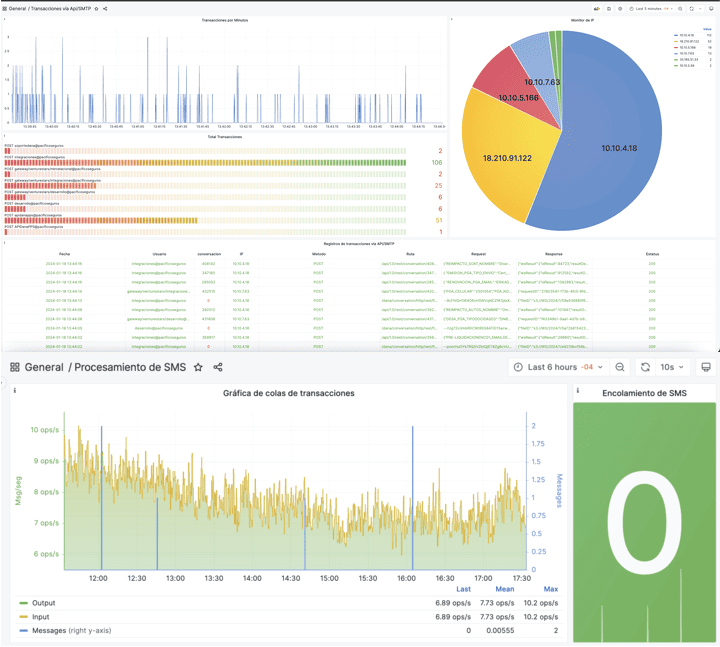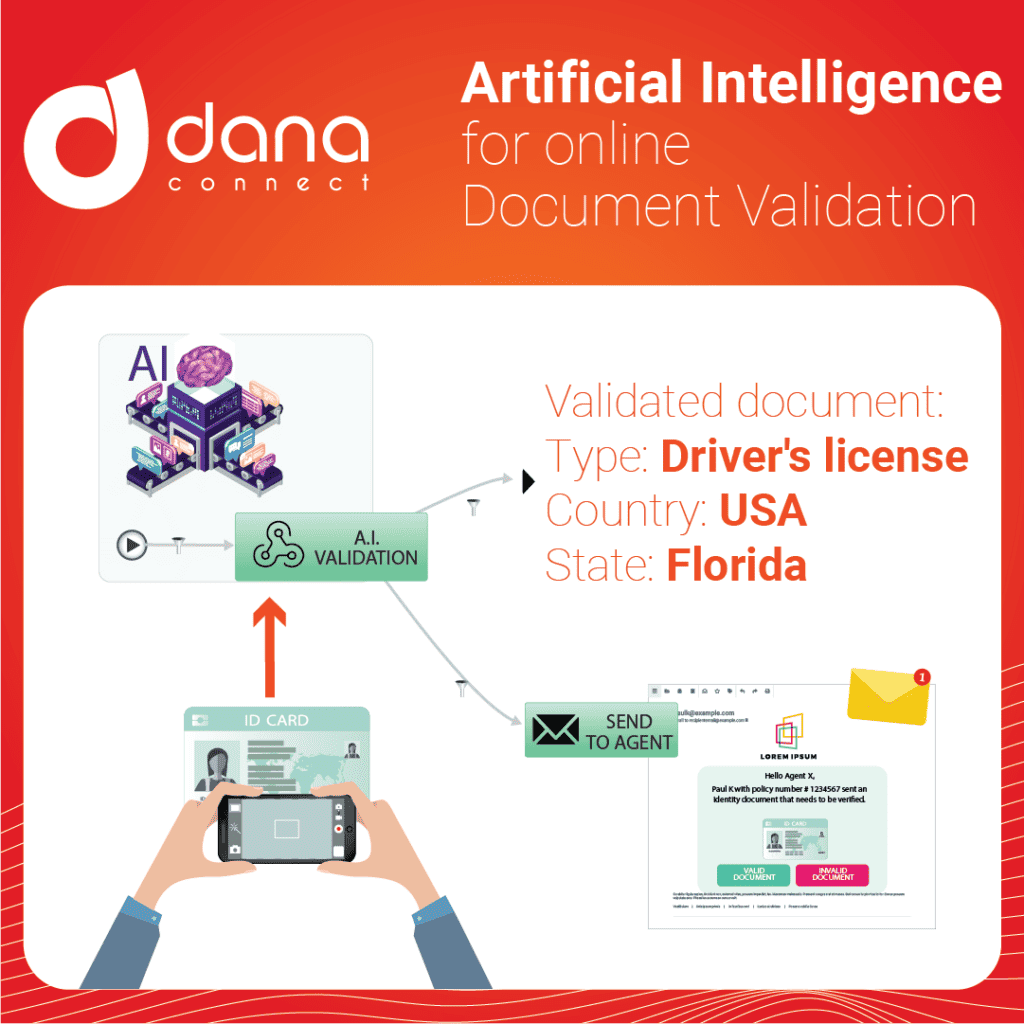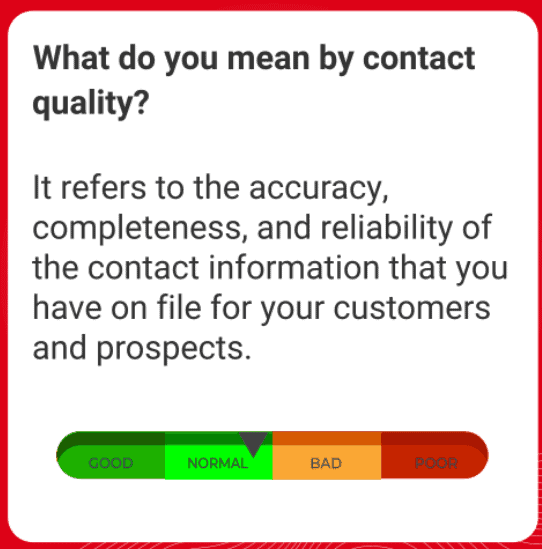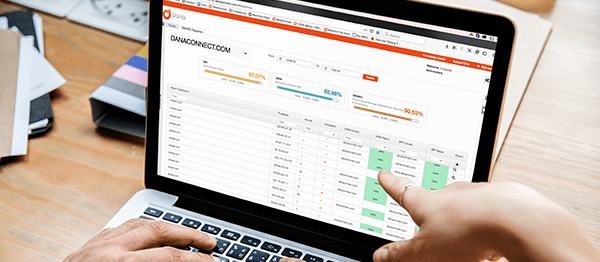Currently, companies are adopting a large number of technological tools to improve their processes and increase their efficiency. Two of these tools are CCM (Customer Communications Management) and CRM (Customer Relationship Management). Both systems aim to help companies interact with customers, but each focused on specific objectives.
Throughout the following article we explore what CCM and CRM systems are, what their main differences are, how they are used in different business contexts and we identify situations where it would be more beneficial to use one or another type of platform.
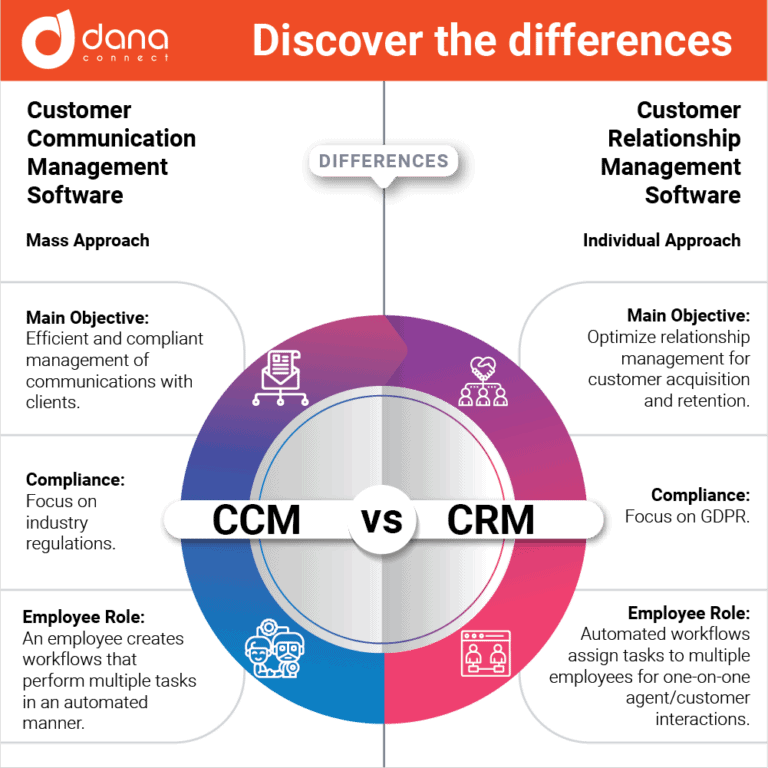
The Convergence and Divergence between CCM and CRM
Given the overlapping features and functionalities between Customer Communication Management (CCM) and Customer Relationship Management (CRM) systems, it’s understandable that distinctions between the two can become blurred. Indeed, both platforms offer a range of similar capabilities, including:
- Contact lists
- Sending personalized messages
- Communications campaigns
However, the difference between CCM and CRM lies in the main objective that each pursues: while CCM is designed to improve communications with customers for the entire life cycle, a CRM system includes aspects related to customer management. relationship with its clients focused on acquisition and retention.
Different objectives: How do CCM and CRM differ?
Although both options have certain similarities, such as both managing contact lists and sending messages, the truth is that their objectives are different.
The CCM seeks to optimize bulk communications and document sending processes through automation, reducing operating costs and allowing regulatory compliance.
Instead, CRM systems are designed to manage individual relationships with customers, allowing organizations to obtain detailed information about the preferences, behavior, and particular needs of each customer based on the history of their relationship. That is, it primarily focuses on building personalized profiles to target commercial efforts based on individual characteristics combined with transactional history.
In any case, both systems allow demographic segmentation, since it is precisely the contact lists that have the clients’ personal data.
Are CCM and CRM mutually exclusive?
The answer is simple: no, they are not mutually exclusive. All the features mentioned above make them complementary tools but not substitutes. Therefore, depending on the type and scope of the company, only one solution or a combination of both systems can be chosen.
In fact, in many organizations CCM and CRM coexist and complement each other to offer a more complete customer experience and more efficient operation. Using both platforms together allows organizations to benefit from the best of both worlds: the detailed management of individual relationships that CRM offers and the efficiency in bulk communication and regulatory compliance that CCM provides.
In highly regulated industries such as finance, both platforms complement each other, with the CRM being useful to generate personalization at a very granular level and the CCM to make messages and document delivery in compliance with regulatory entities.
The Synergy between CCM and CRM
For institutions with large numbers of clients and highly regulated, in many cases the CCM functions as a sending center for all their applications (including the CRM), both due to its high processing capabilities of millions of messages per day, as well as its functionalities for regulatory compliance.
In an ideal environment, the CRM is fed by a data warehouse and could in turn feed the CCM with detailed data and customer segmentations for more personalized communications. At the same time, the CCM could provide the CRM with valuable information about customer interactions with the communications sent, thus closing the feedback loop.

A robust CCM not only centralizes and streamlines communication, but also integrates by bridging systems to create a cohesive technology ecosystem. This synergy not only improves operational efficiency but also enriches customer intelligence, which is crucial for strategic decision making.
The main functions of the CCM system
Customer Communications Management Software focuses mainly on automating bulk communications and documents aimed at large groups of end customers. The main objective lies in facilitating efficient management of messages both externally and internally using different digital channels.
CCM systems allow companies to create personalization based on demographic data such as age, gender, geographic location, etc. Likewise, there is the possibility of using additional, more granular information, as necessary, and this is done by integrating data from external systems such as data warehouses or data lakes with information from both ERP and CRM systems.
Main Differentiator of CCM systems:
A primary differentiator of CCM systems is the macro approach to communications and document distribution. This means that CCM systems are designed to process large quantities of communications with attachments destined for a large number of recipients at the same time, storing traceability of each message individually for regulatory compliance.
A key differentiation of CCM systems is that they allow the generation, storage and sending of personalized customer documents (account statements, invoices, receipts, etc.).
Main Advantages of the CCM System:
- Governance and compliance management of outbound messages and documents to customers.
- Improving information security
- Improvement of internal processes
- Savings in operating times and costs
Main functions of the CRM system
On the other hand, we have the CRM System whose central objective is directed towards managing individual relationships, building detailed profiles about the behavior, preferences and final needs of the end customer.
An effective CRM software enables organizations to compile a comprehensive transaction history, facilitating robust post-sales support and allowing for the customization of commercial strategies based on individual client profiles.
CRM Key Differentiator: Individual Approach
CRM systems are designed to store information on historical business transactions of end customers at an individual level, providing storage of crucial information on customer behavior and thus allowing offers and services to be customized according to particular needs. CRM also optimizes one-to-one relationship management, providing sales and customer service departments with the tools necessary to assign specific agents and schedule specialized tasks. This approach allows for meticulous and personalized monitoring of various processes, ensuring a more human interaction with each client.
Main advantages of the CRM System
- Improves business relationships and quality of service.
- Facilitates the management of individual relationships between client and agent, of large volumes of clients.
- Allows the analysis of customer profile data (as long as you have an appropriate data architecture.)
- Increase commercial efficiency.
What departments use CRM or CCM in a company?
Both CRM and CCM are important tools to improve customer relationships and optimize a company’s communication. The choice of the system to use will depend on the specific needs of each department and its role within the organization.
In general, the sales and marketing department is usually the main user of the CRM (Customer Relationship Management) system, as it is designed specifically to manage and store relationship information with a particular focus on two key areas: acquisition and client retention.
On the other hand, Customer Communications Management (CCM) generally finds its initial impetus in information security departments and extends to various functional areas within a financial institution. Its cardinal mission lies in the comprehensive management of all facets of outbound communications with clients. This ranges from the delivery of relevant content to the personalization of information, in an automated manner and through a variety of digital channels (depending on the software), always with a rigorous focus on regulatory compliance.
Collections
In the field of collections, the CCM allows documents, notifications and payment reminders to be sent efficiently and securely, ensuring that all relevant regulations are met.
Customer Support
CCM also plays a crucial role in customer service, enabling automation and personalization of communication, which improves the customer experience and frees up human resources for more complex tasks.
Operations
From an operational point of view, CCM helps centralize and standardize communications, resulting in more agile processes and greater consistency in messages sent to customers.
Regulatory Compliance
Because CCM is designed to comply with strict regulations, it is an essential tool for compliance departments. It allows companies to maintain a detailed record of all communications sent, which is crucial for audits and to ensure compliance with laws.
Marketing and Corporate Communications
Finally, although CRM is the tool of choice for sales and marketing, CCM also has applications in these areas. It allows, for example, the execution of personalized and secure marketing campaigns, and the efficient distribution of corporate communications.
Conclusions
CRM and CCM solutions are two key tools in customer relationship management. While they share some similarity in functionality, they present important differences that significantly affect how organizations manage their business processes.
The choice between CCM and CRM is not binary, but rather must align with your organization’s strategic objectives. In highly regulated environments such as finance, these platforms can act in a complementary manner, maximizing efficiency and compliance. By understanding the capabilities and limitations of each system, financial institutions can make more informed decisions, optimizing their resources and achieving a sustainable competitive advantage.















